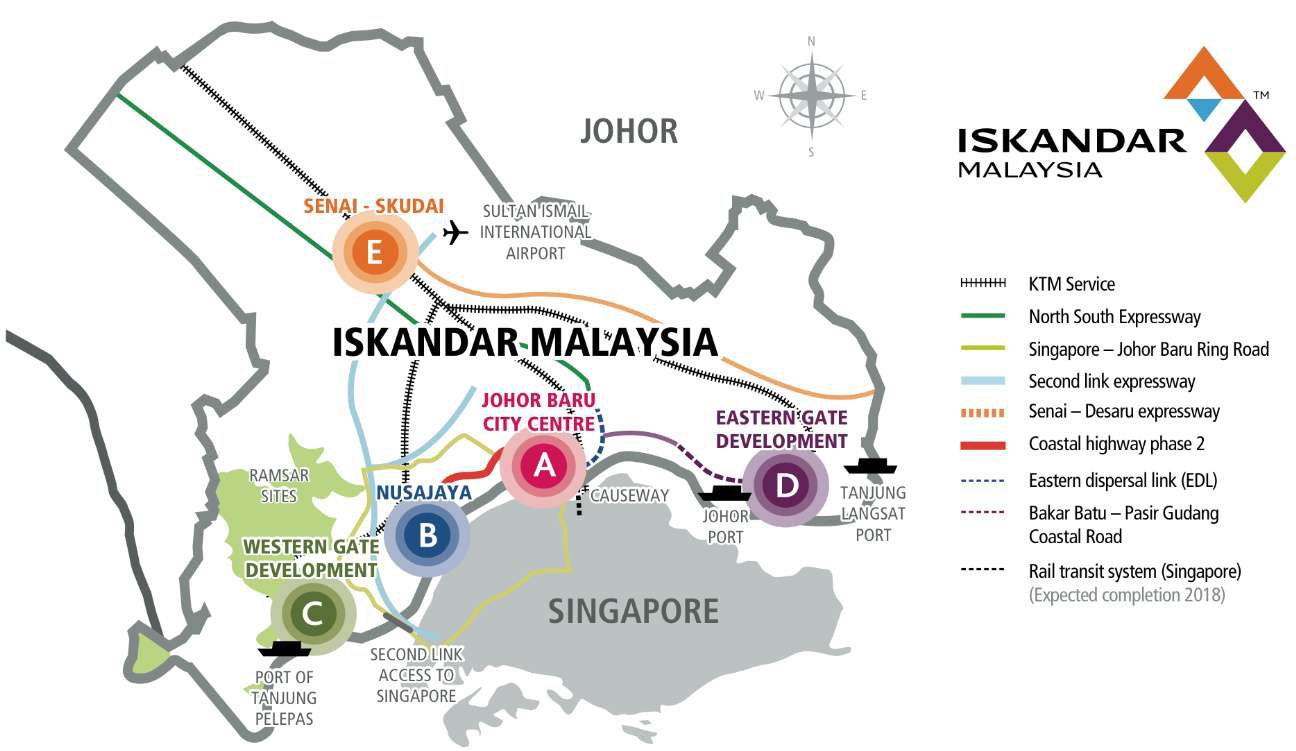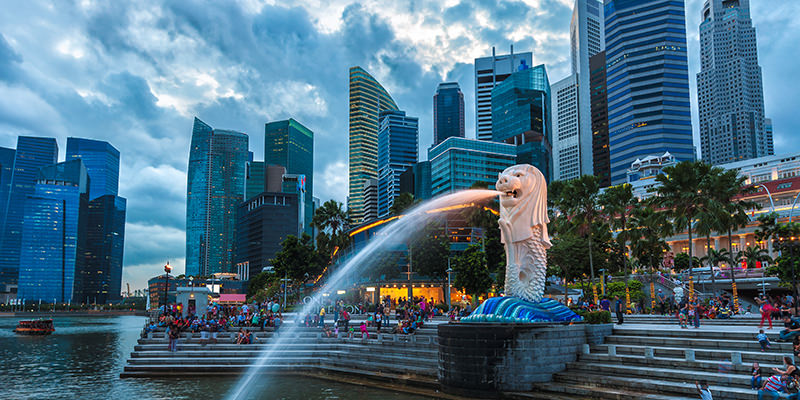Iskandar Malaysia in Johor is moving closer towards becoming a sustainable “international metropolis”, and spurring economic developments that actuate Malaysia’s global potential. There are 3 strong key driver which contributes to Iskandar Malaysia :
1. West-Side Story
Ho Chin Soon Research chief executive officer Ishmael Ho said within 10 years, sceptical investors would regret not positioning themselves earlier in the region. “This is based on the expected hike on property prices (residential and commercial) within Flagship A and B of Iskandar Malaysia 10 years from now,” he said. Flagship A, B and C are located on the west side of Iskandar Malaysia.
“As it stands, Iskandar Malaysia will have oncoming supply of industrial land use at about 20 per cent over their current number of industrial supply, whereas Greater Kuala Lumpur only looks at about 11 per cent. This gives a good idea of the current and future industrial property usage,” said Ishmael. “The economic projection under Iskandar Malaysia’s 20-year master plan has been met and we expect that to carry on. In fact, we may see a ramp-up,” he added. Ahyat Ishak, author of the best-selling property book “The Strategic Property Investor”, said rapid development on the west side of Iskandar Malaysia was driven by catalytic projects such as Legoland, a medical hub and an administrative centre as well as infrastructure projects like highways and the Johor Mass Rapid Transit.
“But now, we could see developments spreading towards the east side of Iskandar Malaysia. We believe the next growth area is Pasir Gudang, which used to be the eastern-most fringed,” he told Business Times. Ahyat expects by the second half of Iskandar Malaysia’s 20-year master plan, property prices in the region could double those in Greater Kuala Lumpur, driven by the Kuala Lumpur-Singapore high-speed rail (HSR) and Johor Baru-Singapore Rapid Transit System (RTS).
“Coupled with the RM170 billion Pengerang project (Pengerang Integrated Petroleum Complex) and data centre at Sedenak, these industries serve to attract investments and create more job opportunities (which) also create a strong demand for housing, retail and amenities. “With continuous enhancements on connectivity and accessibility like the completion of the Eastern Coastal Highway, Senai Desaru Expressway and the ongoing upgrading works on the Pasir Gudang Highway, the east side remains appealing to many businesses,” Chang said. A ready catchment within the vicinity and 4.5 per cent population growth in Iskandar Malaysia ensures long-term demand for properties, he added.
2. Talent and Job Opportunities
Irda’s Ismail said Iskandar Malaysia’s current population was 1.7 million and it could grow to three million by 2025. The growth of investments in the region has led to more economic activities and created further demand for talent. “Since 2007, a total of 605,381 jobs have been created in Iskandar Malaysia, in both the nine sectors and others such as property, construction and retail. “It is targeted that by 2025, Iskandar Malaysia will create 817,500 job opportunities and we are still in need of talent from the other states,” he said. Dennis said Iskandar Malaysia would also benefit from its rapid population growth (80,000 a year), a rising number of tourists from China and more industries setting up operations there.
“Some high-profile industry leaders are going to make announcements supposedly soon. So, more jobs will be created. That is what necessary for sustainable population growth,” he said. Another contributing factor towards making Iskandar Malaysia as one of the world’s fastest growing economic regions is its well-designed and comprehensive master plan to address all economic sectors and factors such as liveability, transportation and infrastructure. “Iskandar Malaysia is underpinned by a robust legal framework, the Iskandar Regional Development Act 2007,” added Sheldon.
3. Singapore Factor
The Singapore Factor Analysts said a key factor to Iskandar Malaysia’s success and its future prospects as an economic region was its proximity to Singapore. PropertyGuru’s Sheldon said there was close cooperation and collaborative spirit shared with Singapore, an integral and supportive partner of Iskandar Malaysia. “Iskandar Malaysia provides the ideal hinterland for Singapore’s small and medium industries,” he said. Ahyat said industrial land tenure in Singapore was leasehold and the country only supported high-yield companies. “So companies that have businesses over there but do not yield high profits due to high costs will shift to Iskandar Malaysia.
Moreover, there are a lot of Malaysian workers who work in factories in Singapore… shifting to Iskandar Malaysia is ideal to cut costs,” he said. Ishmael said as travelling habits change, staying in Iskandar Malaysia while working in Singapore would be a viable alternative, even to Singaporeans. “The highest average travelling time for Singaporeans is 53 minutes from house to workplace. There are places in Iskandar Malaysia where you can stay there and travel to Singapore within that time frame,” he said. Dennis said once the connectivity infrastructure was complete — the RTS and HSR — Iskandar Malaysia and Singapore could be regarded as an economic region similar to Shenzen and Hong Kong. “Price disparity between Iskandar Malaysia and Singapore is very large right now and we expect it to narrow once the connectivity is up,” he told Business Times.





